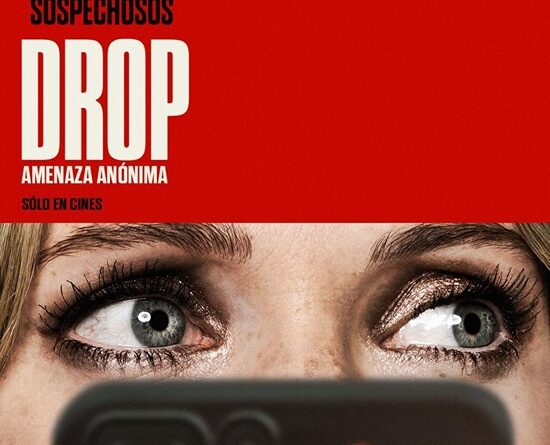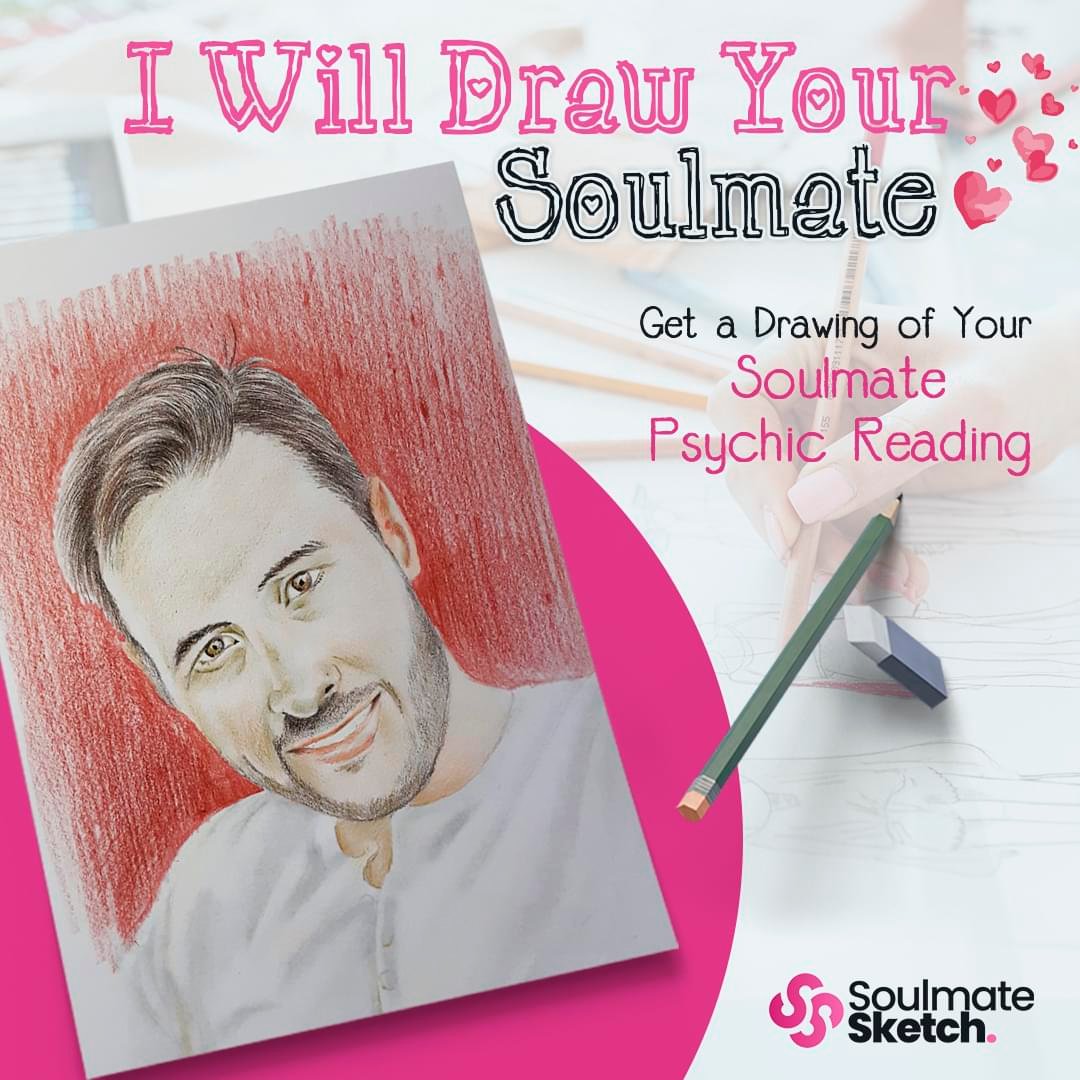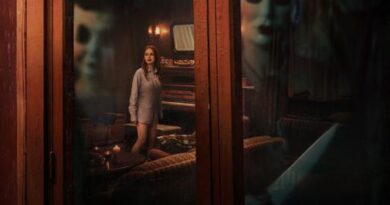“Drop” Movie Drops A Few Surprises In A Solid Date Thriller | Review
“They really should have called this movie “Deal with it,” I found myself thinking about half an hour into watching the horror thriller with the very generic name “Drop.” After all, the idea here – of a date going wrong because one of the participants must perform various tasks without the date’s partner or anyone else noticing that something is strange here – was the center of the reality game show “Deal with It,” based on an Israeli format, who got three seasons on TBS. But they went with “Drop,” probably because the film is about a date that becomes a nightmare, thanks to technology and someone who uses it to terrorize the heroine’s life.
Beyond the film name issue, I had high expectations from “Drop.” A romantic film about a date gone wrong, by a promising horror director, with a plot along the lines of “there’s someone on the phone telling you what to do, otherwise something terrible will happen to you or your relatives” and an interesting cast, looks like a pure guilty pleasure. Although the film has some problems with the level of plot or pacing, I’m happy to announce that it lived up to expectations, as you can conclude from the following “Drop” review.
What Is The Movie Drop About?
“Drop” centers on Violet (Meghann Fahy, “The White Lotus,” “Your Monster”), a single mother to a cute five-year-old boy, and for a change, also a tolerable boy named Toby (the first film by Jacob Robinson, who, as far as I understand, is an Irish TikTok star). The reason Violet is a single parent is that her husband emotionally abused her and, at one point, tried to murder her. Then he died, And she tried to overcome the brokenness.
Violet becomes a therapist who, of course, specializes in treating victims of domestic violence. With the encouragement of her cool younger sister Jen (Violett Beane, “The Flash,” “Truth or Dare”), she also returns to the world of dating. The sister gives her emotional support, helps her choose what to wear, and even volunteers to babysit the child. Violet arrives at a prestigious restaurant overlooking Chicago, ready for a date with a handsome and kind guy named Henry (Brandon Sklenar, “It Ends With Us,” “Midway”), who works as a photographer for a living.
While Violet waits for her dream date, she meets several restaurant employees and passersby, some of whom will later become suspects in what is happening. Very quickly, Violet receives messages from “DigiDrop,” an imaginary application that corresponds to Apple’s “AirDrop”: a service for transferring files between users who are in the exact location, up to 15 meters, according to the description in the film. Usually, these messages are silly or even perverse, but sometimes, there is something deeper in them.
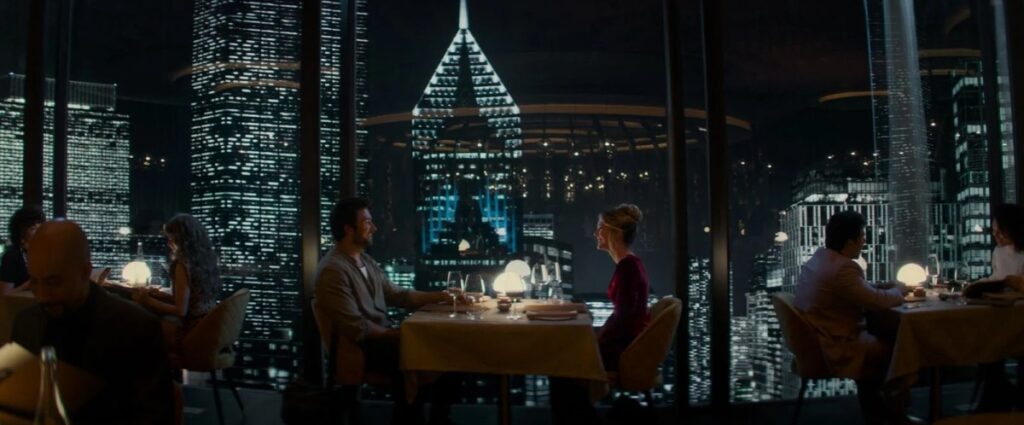
The problem is that someone is sending our heroine threatening messages. The protagonist is trying to deal with her relationship anxiety and the horror of dating. At the film’s beginning, she gets out of the taxi and looks at the skyscraper where the restaurant is located as if it were a monstrous building with King Kong hanging from the edge. Poor Violet finds herself facing a different kind of horror. Someone who is in her house with her sister and child threatens to kill them if she fails the tasks, which become more extreme by the minute.
Unfortunately, these are not stupid tasks like making up lies between the couple, making a scene of anger with the waiter one day, or stealing fries from the table next to the diners and eating them after dipping them in a glass of Coke, but with slightly more stringent demands. Violet’s ultimate task is to kill her date for reasons we’ll understand later. There are also strict prohibitions we recognize from movies of this kind, like not telling the police or anyone else because the bad guys seem to know everything.
💀 Killer Deals & Scary Recommendations 💀
🎭 Costumes & Accessories
HalloweenCostumes Fun Costumes Entertainment Earth
🛒 Online Shopping
AliExpress Amazon Walmart Etsy
🧛 Collectibles & Horror Brands
Funko Hot Topic Lego Spirit Halloween
🎢 Attractions & Tours
GetYourGuide Tiqets Viator Klook
📖 Blogs & Horror Sites
Bloody Disgusting iHorror Fangoria
🩸 Disclaimer: Some links are affiliate links. The price stays the same – it just helps keep the site alive 👻
A Problematic Whodunit Mystery
The tension structure of movies like “Drop” operates on several levels. The first issue is, of course, the fate of the heroines, and in this case, also those connected to her. The tension here is built throughout the film and in individual scenes in which the heroine has to do something, or at least make sure that the date doesn’t see that she’s doing something she’s not supposed to. Of course, if the date ends without the task being completed (and among us, there are a thousand and one reasons for Henry to leave the restaurant while calling Violet, “You Bitch!”), it will be a failure – and not only in terms of the heroine’s desire for a relationship.
The second issue is the mystery of the person behind The messages and why: You know, movies like “Who Did It?” (Whodunit), which at best would look like a well-made Agatha Christie thriller. In the case of “Drop,” quite a few questions arise about the harasser’s identity and why he is doing it. Is it a specific figure from the heroine’s past, like, say, the dead husband’s brother (as it appeared in the final version of the script, by the way)? A passerby whom the heroine encounters in the restaurant? One of the restaurant’s employees, like the bartender (Gabrielle Ryan) who is a little too interested in the heroine, the affable waiter (Jeffrey Self) who may be hiding something among all the unsuccessful jokes and his theatrical performance, or the matter-of-fact hostess? Could it be a conspiracy by the heroine’s sister for a specific purpose related to her desire to kidnap the child she is looking after? Or maybe the heroine is in post-traumatic due to what she experienced, and she is imagining messages that did not exist and were not created? Or is the husband not dead at all and returns From prison to chase his ex-girlfriend? Or did he die but return as a ghost who sends messages, which puts the film in the subgenre of cursed apps or social networks?
So it’s true that some of the scenarios presented here are the product of the writer’s feverish imagination due to a combination of an overdeveloped imagination and too much watching hours of bad horror films and cheap thrillers, and that’s a shame. “Drop” tries to go in several directions to confuse the viewer, but it doesn’t follow through with any theory. Ultimately, the film presents a solution that makes sense, but some argue it’s predictable, coincidental, or at least far from convincing.
Without spoilers, I agree with the criticism that the film could have aimed for a slightly more complex solution. The mystery exists here, but it’s hard to say that I was impatient to discover its solution. The answer, when it arrived, didn’t evoke feelings of “wow” or “how the hell didn’t I think of that,” but more along the lines of “Wait a minute, is that all?”.
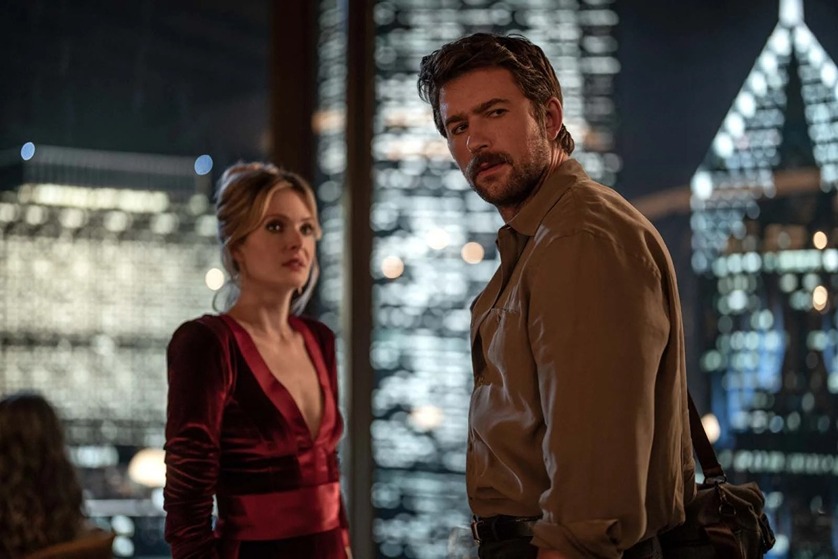
It All Started With Shrek
According to reports, the idea for the film started with a mysterious green monster called Shrek. One day, executive producer Sam Lerner, producer Cameron Fuller, and Chinese actress Olivia Sui – Lerner’s girlfriend – were sitting in a restaurant in Italy. At one point, Sui started receiving AirDrop messages on her phone centered around scary Shrek memes (whose creepy potential and fascinating history we’ve already written about on the site). The three spent the entire evening figuring out who was behind these messages. They found a particular suspect and followed him until they realized it wasn’t him. The mystery surrounding the sender of Shrek’s messages remains open, and the world continues as usual.
A few years later, this story became a screenplay written by Jillian Jacobs (not to confuse with stunning actress Gillian Jacobs from “Community”) and Chris Roach, who had already written together the very disappointing “Fantasy Island” and the enjoyable “Truth or Dare.”
The excellent director Christopher Landon (“Paranormal Activity: The Marked One,” “Scouts Guide to the Zombie Apocalypse,” “Freaky,” and the two “Happy Death Day” films) joined the project shortly after he got fired, resigned, or whatever it was from “Scream 7,” the sequel to the horror franchise that became a behind-the-scenes telenovela. He made a few changes to the main script and set off.
Not Really A Battle Between Sexes
Christopher Landon is one of the most interesting names in current horror cinema. In his previous works, he has shown his ability to create films that, while defined as horror thrillers or even slashers, are considered relatively gentle in terms of horror and gore. Comedy, romance, or even emotion can take its place. In this respect, “Drops” goes a bit between the Drops, and I’m not sure it does him any favors.
Unlike some of Landon’s previous films, the humor is less prominent. It does exist to a certain extent: we get it mainly through supporting characters, primarily the lovable waiter or the cool sister, but it’s hard to say that it’s as sophisticated and consistent as in the films “Happy Death Day,” “Freaky,” and others. “Drop” is a pretty serious film; some might say that it even tries to be realistic to a certain extent, for better or worse. Landon moves the action to the playing field of adults, not young people in high school or college, as seen in his previous films.
The film deals with a complex subject from the outset. Some people indeed treat the fear of dating as a curiosity, or even in a mocking way, but for people with painful baggage from previous relationships, returning to the playing field can be a challenge. The film raises the issue of sexual abuse and refers to exceptional cases that come from the playing field of sexual harassment, rape, and everything in between, both past and present.
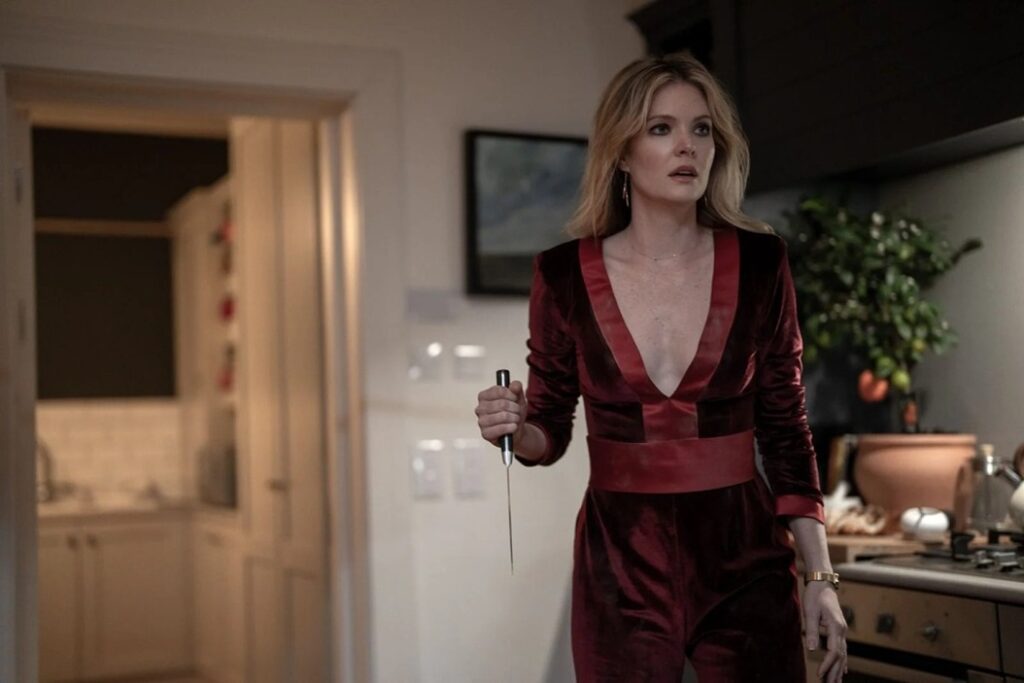
The feeling is that no one can connect the dots and save Violet, so she is on her own, all by herself or another silly Pop song’s name. She tries to capture the attention of several men, like the piano player who tries too hard to look charming, but does not receive the rescue through him. Women who try to help her misunderstand the situation, like the bartender who thinks she needs rescue from her date. Perhaps a metaphor for the fact that a woman who has experienced harassment or abuse does not know who to turn to because no one will listen and provide a solution.
Still, the film somewhat subverts the accepted narratives. In a perhaps symbolic way, Violet is the one who has to drip drops of a deadly drink into her date’s glass, and not the man as in the horrific cases of inserting a date rape drug that we have often encountered in the news. Violet is the one who drinks a little too much, even before her date arrives, and it is the man who thinks about saying “no” at some point because he has a job afterward. It’s not a complete gender reversal, but indeed a certain correspondence, ironic or critical, with the toxic relations between the two sexes. At least those that reach the courts’ walls or newspapers’ news pages.
Without spoilers, in the end, we understand that not everything we saw here is related to relations between the sexes and that the man’s role in this story is more significant – not just because he is a man. The film builds a list of potential suspects, which consists mainly of men (even when the sender of the mysterious messages mentions that he could also be “the girl in pink”; she receives no further attention from the heroine), but the real story is different. This could be a deliberate deception by the director or, more precisely, the screenwriter.
Is Drop Scary?
There are some successful moments of tension in the film, even if not ones that will make you sit on the couch or in the chair for the entire movie. Landon manages to convey the experience the heroine goes through in a visually interesting way; for example, text messages are displayed large on the screen, which saves us the annoying experience of seeing screenshots of the phone screen or in tiny letters on the screen, or straining our eyes trying to read what is written in the messages. On the other hand, there was one shot in the film of handwriting on a note, quite significant to the plot, which I had to watch several times to understand.
The film’s cinematography is original in parts, with interesting compositions and some impressive shots. As befits a film that depicts the mutual interrogation of a couple during a date, there is quite a respectable place for points of view here, including some unconventional angles. Landon chooses to convey some points in the plot – for example, the potential suspects – through their lighting. The use of music and sound effects was interesting in some cases, even if there were cases where the sound took over the scene a bit, in my opinion, when I thought perhaps silence would have been better to contribute to building the tension.
What does align with a lot of Landon’s work, certainly as a director (we recently saw the cool, funny, and quite bloody slasher “Heart Eyes” that he wrote), is that the horror here is quite minimal: there are some kills, but they are very subtle, and of course, there is no gore. You can understand the claim I saw in several horror groups on Facebook about the film “Drop,” which is mainly a thriller with a bit of horror and not a horror film in the complete sense. And if there is a thriller, it is effective at times, but one during which you can breathe from time to time, where you can cut the tension with a knife, where your heart rate will remain normal, and other clichés.
And the truth? I felt the film could have gone a little further on several levels: humor, romance, violence, emotional depth, and so on. Right now, the film is not entirely going in one direction. For example, the pace of what happens inside the restaurant is a little different from what happens in the heroine’s house, making the viewer “forget” the danger in the house, which is supposed to be hanging over the heroine’s head throughout the film.

A Must-have In A Dating Movie: Chemistry Between Couples
Meghann Fahy and Brandon Sklenar have appeared mostly on TV, not in horror series, which means I haven’t seen them much. Fahy was very impressive in the second season of “The White Lotus.” At the same time, many may recognize Sklenar for his role in “It Ends With Us,” where he played roughly a role similar of the lovely man who is there for someone who has been abused by someone close to her (potential typecast?).
On the one hand, one could say that there are many impressive layers to their performance, and no less important, most of the time, they do convince us of the dynamics of a couple on a first date, to the extent that I can even remember what dynamics are in such situations (full disclosure: the writer of these lines has been married for 11 years and has two lovely daughters, so lately he was exposed to the dating scene mainly in horror films about dates, such as “Fresh,” “F Marry Kill,” or the current movie). In other words, there is chemistry between the couple here, although everything that can go wrong on a date does go wrong. This is a key condition for a second date, or at least for getting through a 90-something-minute film.
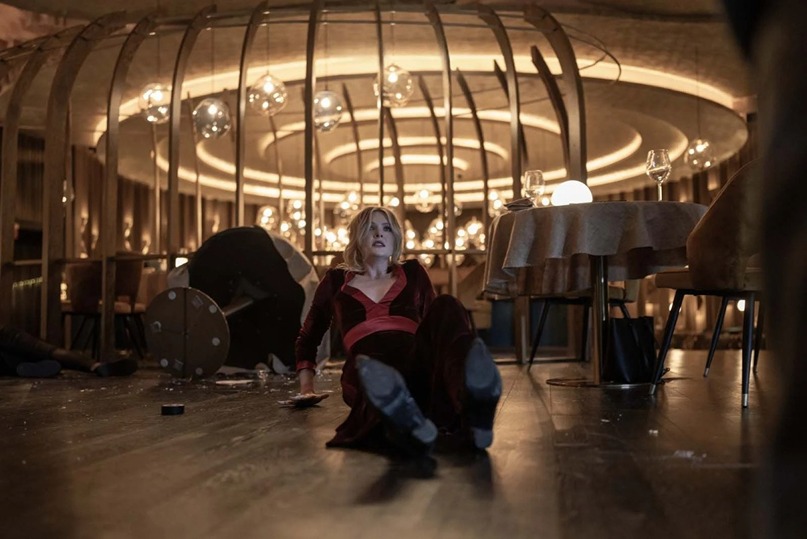
The actors’ performances here are compelling and, at times, impressive. Still, none of them will enter the pantheon of horror thrillers in terms of the character’s emotional depth and identification with it (which could also be related to the script). In my opinion, there are some plot holes, such as the question of the heroine’s past, and flaws in the presentation of how they built their relationship throughout something like three months before the meeting.
This is not a classic case of “a quick encounter with a mysterious psychopath on Tinder,” as the sentence that appears on some of the film’s posters might suggest (“You should have swiped left”), but a process that was built over several months, when the characters had already reached a certain level of familiarity. Specific dialogues in the film show the opposite, a bit like a blind date. What the hell is there to talk about for three months if, in the end, you hardly know the person you’re meeting with?
You could say that “Drop” is like a successful and fun date, but without all the fireworks and sparks we know from the movies. A date that won’t end in bed but could be the basis for the beginning of a romantic relationship, which is built gradually. Of course, you can use it as a date movie, providing thrill-seeking couples with some fun at the beginning of their relationship or showing them that their current date could have been worse and bloodier. In horror cinema, as in love life, the secret is the proper proportions.
Drop (2025) – Frequently Asked Questions
Who directed Drop? The director of the film is Christopher Landon, known for horror movies like “Paranormal Activity: The Marked Ones,” “Freaky,” and “Happy Death Days” movies.
Who plays in Drop? The film’s cast includes Meghann Fahy, Brandon Sklenar, Violett Beane, Jeffery Self, and Jacob Robinson.
Who wrote Drop? Jillian Jacobs and Chris Roach, responsible for “Fantasy Island” and “Truth or Dare,” wrote the screenplay.
How long is Drop movie? The running time of the film is about 95 minutes.
When was Drop filmed? United States and Ireland.
What languages are spoken in the film? English, but it has many Emojis, which is the language of the social media era blah blah blah.
When was Drop released? The film’s official release date in the United States was April 11, 2025. Previously, it was shown at the 2025 South by Southwest Film & TV Festival (SXSW) in March.
What was the budget of Drop? The estimated budget of the film is $11 million.
How much did Drop movie gross? The film approximately $28.5 million, according to Box Office Mojo
What do the reviews say about Drop? The film got mostly positive reviews, even though we agree it’s far from a masterpiece. On IMDB, it has a score of 6.3 out of 10. About 84% of the professional critics of Rotten Tomatoes gave it a positive review.

